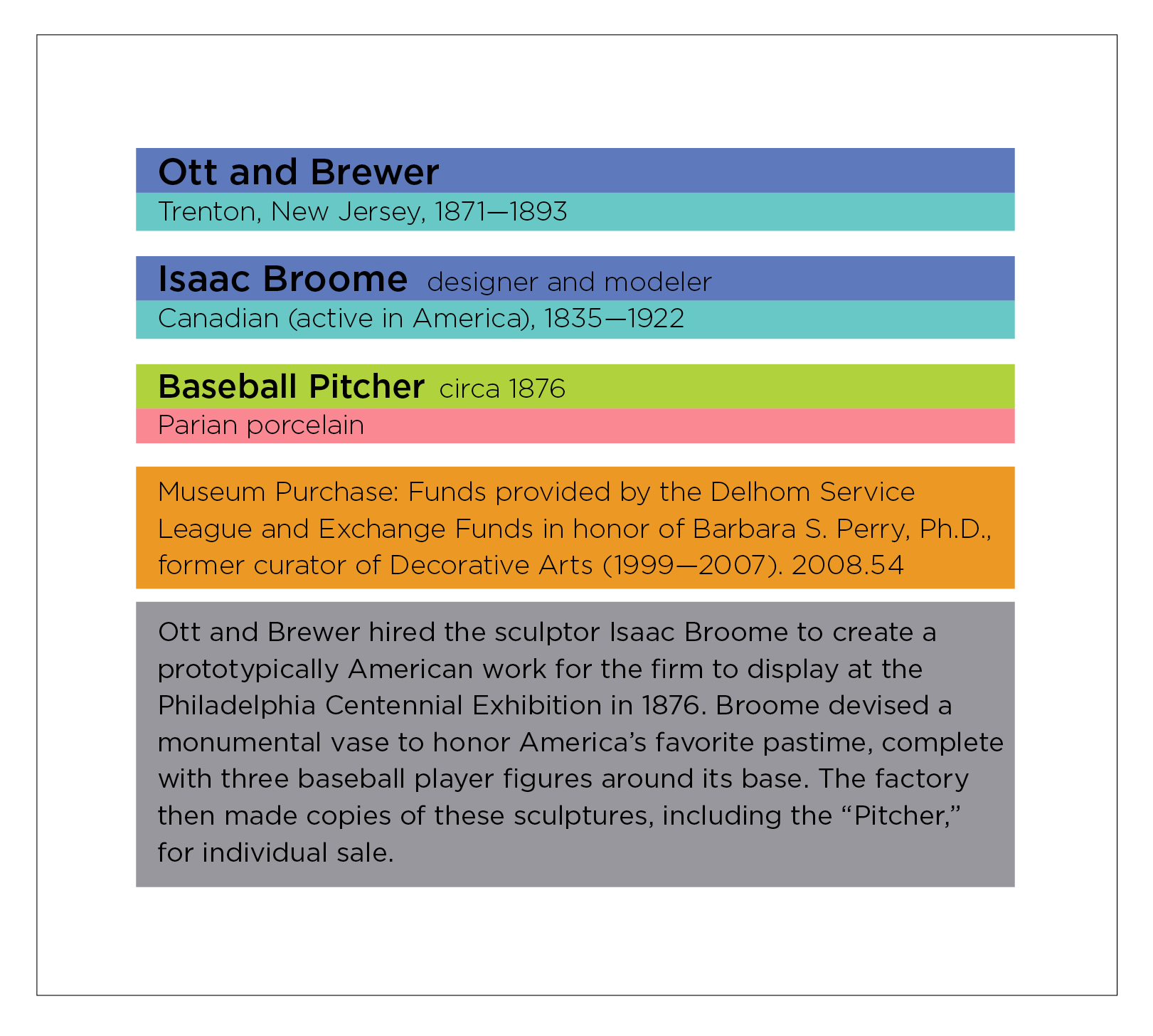The subtle art of the museum label
By Jen Cousar
One of our greatest goals at The Mint Museum is to ensure that art is for everyone. When our doors are open, we host community programs, free evenings, and a whole host of tours and programs to help our community experience art like never before. But even with open doors and open conversation, some things within museums are just down right confusing. Enter the museum label. Many of you have seen these text panels next to every work of art in the museum, but what exactly do they mean? Well, we’re here to explain, so that your next trip to the Mint—and any other museums you visit—will be that much more valuable and accessible.
Every work of art in The Mint Museum has a label. The label provides useful information about the object, such as when and where it was made and by whom. Most of the labels also have a paragraph offering more detailed information about the object, including who or what it depicts or something interesting about its design or creation. Every label in the museum has the same essential parts, as illustrated by this example:
 Artist or maker
Artist or maker
If we know who made the work of art, that person’s name appears on the first line. Sometimes a work of art is made by a factory, workshop, or studio, in which case its name appears on that line. If we know the name of an individual working for that organization who contributed to the object’s creation in a key way, then he or she is also identified. “Attributed to” means that we do not have definitive proof that this person created the work, but he or she likely did
Point of origin
Under the artist’s name, we indicate that person’s nationality or culture, and life dates. For organizations, location and years of operation are listed.
Name and date art was created
Sometimes we know exactly when an object was made, but for historical works of art we often have to estimate. In the label example above, for instance, the work was made circa, or about, 1876.
Material
What the object is made of, whether it be acrylic paint, porcelain, wood, stone, canvas, or any combination of materials.
Object’s Owner
This information is called the credit line. If the work is owned by a museum, either the Mint or another institution who is lending the object to the museum, then the credit line generally includes whether the object was a gift to the museum or a purchase. It also includes the accession number. This is unique to each object in a museum’s permanent collection and identifies it in the museum’s records. Loans from private collectors do not have accession numbers.
Description
This paragraph gives you background information of interest to help increase understanding of why the object was created.